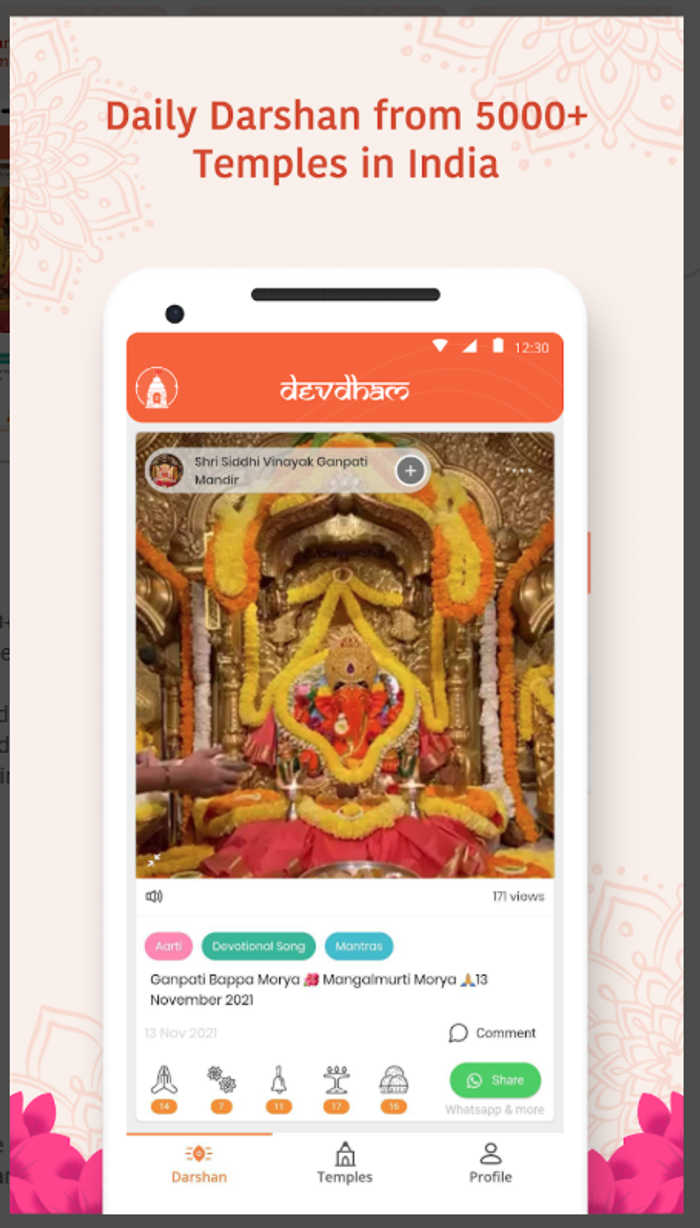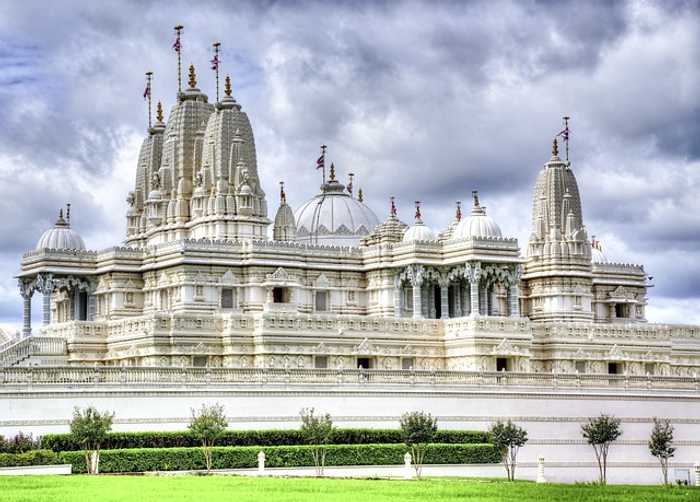Published 18:38 IST, January 24th 2024
Temples like Shree Mahakaleshwar Jyotirling in Ujjain and Siddhivinayak Ganpati in Mumbai offer virtual darshan through dedicated apps.
Advertisement
Tech transforms worship: Following the historic decision and consecration of the Ram Mandir in Ayodhya, interest in religious and spiritual apps has surged. Platforms like Vama, DevDham, UtsavApp, and SriMandir are witnessing a substantial increase in organic searches.
Temples like Shree Mahakaleshwar Jyotirling in Ujjain, Shri Siddhivinayak Ganpati in Mumbai, Shri Kashi Vishwanath in Varanasi, and Tirumala Tirupati Devasthanam in Tirupati have already embraced technology, offering devotees a virtual darshan through dedicated apps. This existing reality prompts the question: Is temple tech already a significant trend in India?
Advertisement
Temple tech appears to be the next frontier in India's spiritual domain, offering a harmonious blend of tradition and technology, say experts.

Devotion goes digital
There are numerous players in the market that enable devotees, including NRIs, to remotely connect with temples and religious rituals from the comfort of their homes. One such platform is Temple Connect, which is dedicated to digitising and disseminating information about temples. Operating through its Smart Temples Mission, the platform has a global presence in 57 countries and is associated with 9,864 temples. It utilises technology, including AI and CCTV, to enhance safety, security, and overall administration.
Advertisement
"Temple Connect's Smart Temples Mission focuses on digitising and enhancing the safety, security, and overall management of temples worldwide. Through initiatives like the Ayodhya project, we integrate AI and CCTV technologies to benefit the pilgrims' experience," said Giresh Vasudev Kulkarni, Founder, Temple Connect.
Other notable apps in this space include 'VR Devotee' by Kalpnik Technologies, offering a diverse selection of temples and deities with features like 'Live Darshan' at specific times and a VR section for immersive experiences. 'Shemaroo Bhakti' from Shemaroo Entertainment provides Live Darshan for various temples, along with an e-commerce section for purchasing puja items and options for online donations through coupons or Paytm vouchers. The 'Aastha' app serves as a guide to its TV channels in multiple languages, featuring live-streaming and a collection of videos on yoga and Ayurveda.
Advertisement

Paytm's divine donations
Additionally, Paytm also facilitate contributions to devotional places. Users can contribute to various sacred sites listed on Paytm, including Banke Bihari Vrindavan, Ghata Mehandipur Balaji Temple Trust, ISKCON Bangalore, ISKCON Pune, ISKCON Chowpatty, Lalbaugcha Raja Ganpati, Shree Kashi Vishwanath Mandir Trust, Shri Badrinath Temple, and Shri Jagannath Temple in Puri and many more.
This integration of technology and spirituality has been ongoing, providing devotees with accessible and convenient ways to stay connected with their religious practices and places of worship.
Advertisement
What does it involve?
The digitisation of Hindu temples involves the conversion of manual and analog processes into digital formats, paving the way for efficient data management and improved accessibility. Key aspects of digitisation include live darshans, online pooja and seva bookings, e-marketing, and more. This shift is not just a response to contemporary challenges but also a means to preserve religious rituals and practices for future generations.
Digitisation offers transparent accounting, efficient management of temple affairs through automation, increased online presence, improved accessibility for devotees, enhanced safety and security measures, and preservation of temple heritage. By implementing digital platforms, temples can operate autonomously, reducing the risk of mismanagement often associated with government-appointed committees.
Advertisement

In the era of the Sanatan economy, with global attention drawn to historic events like the inauguration of the Ram Mandir, there is a growing interest worldwide in temples. Now more than ever, people are turning their focus towards these sacred places. In this digital age, apps play a crucial role in promoting awareness about temples.
"Temple Connect, over the past two decades, has been dedicated to documenting and promoting awareness about temples, both large and small. With a daily reach of 60-65 million people through various platforms, the organization ensures that crucial information about these sacred places is shared, including facilities, accessibility, and instructions," Kulkarni emphasised.
While the benefits of digitisation are evident, challenges persist. Traditionalists resistant to change, lack of technical expertise, and the absence of standardisation in digitisation processes pose hurdles. Security and privacy concerns also need to be addressed to ensure that digitised content remains secure and accessible only to authorised individuals.
Various forms of digitisation can be implemented to enhance efficiency, security, and the overall experience for devotees. These include digitising financial transactions, implementing digital queue management systems, archiving temple records digitally, enhancing access control through digital systems, offering virtual darshans, and implementing digital inventory management.

The future of temple tech
As the digitisation wave continues to redefine the temple landscape, the future holds immense potential. Following the inauguration of the Ram Mandir in Ayodhya, temple technology's role is poised to evolve further.
16:52 IST, January 24th 2024